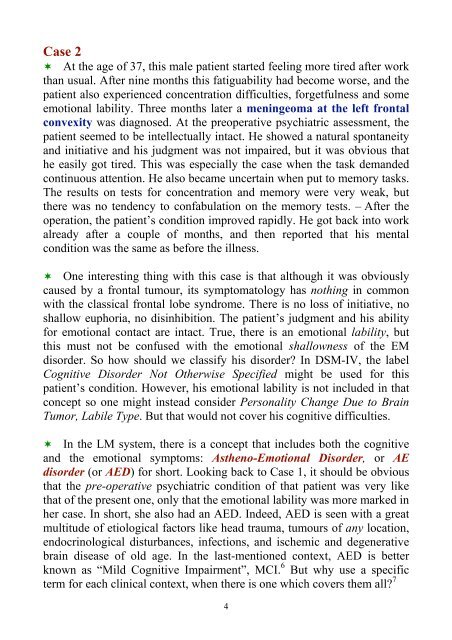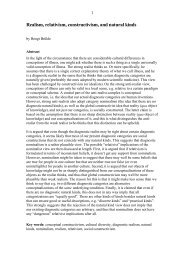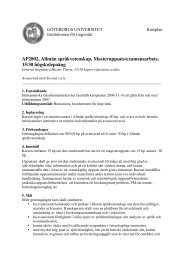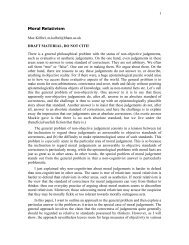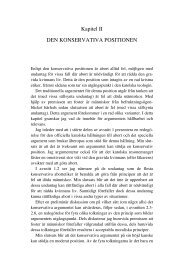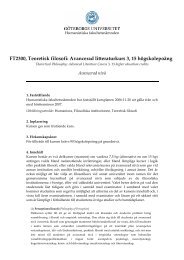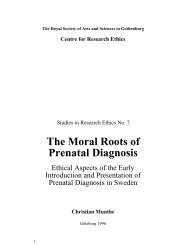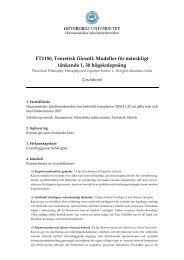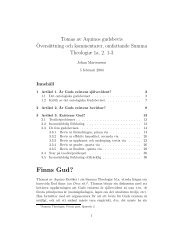Memory, emotion and brain injury Memory, emotion and brain injury
Memory, emotion and brain injury Memory, emotion and brain injury
Memory, emotion and brain injury Memory, emotion and brain injury
You also want an ePaper? Increase the reach of your titles
YUMPU automatically turns print PDFs into web optimized ePapers that Google loves.
Case 2<br />
At the age of 37, this male patient started feeling more tired after work<br />
than usual. After nine months this fatiguability had become worse, <strong>and</strong> the<br />
patient also experienced concentration difficulties, forgetfulness <strong>and</strong> some<br />
<strong>emotion</strong>al lability. Three months later a meningeoma at the left frontal<br />
convexity was diagnosed. At the preoperative psychiatric assessment, the<br />
patient seemed to be intellectually intact. He showed a natural spontaneity<br />
<strong>and</strong> initiative <strong>and</strong> his judgment was not impaired, but it was obvious that<br />
he easily got tired. This was especially the case when the task dem<strong>and</strong>ed<br />
continuous attention. He also became uncertain when put to memory tasks.<br />
The results on tests for concentration <strong>and</strong> memory were very weak, but<br />
there was no tendency to confabulation on the memory tests. – After the<br />
operation, the patient’s condition improved rapidly. He got back into work<br />
already after a couple of months, <strong>and</strong> then reported that his mental<br />
condition was the same as before the illness.<br />
One interesting thing with this case is that although it was obviously<br />
caused by a frontal tumour, its symptomatology has nothing in common<br />
with the classical frontal lobe syndrome. There is no loss of initiative, no<br />
shallow euphoria, no disinhibition. The patient’s judgment <strong>and</strong> his ability<br />
for <strong>emotion</strong>al contact are intact. True, there is an <strong>emotion</strong>al lability, but<br />
this must not be confused with the <strong>emotion</strong>al shallowness of the EM<br />
disorder. So how should we classify his disorder In DSM-IV, the label<br />
Cognitive Disorder Not Otherwise Specified might be used for this<br />
patient’s condition. However, his <strong>emotion</strong>al lability is not included in that<br />
concept so one might instead consider Personality Change Due to Brain<br />
Tumor, Labile Type. But that would not cover his cognitive difficulties.<br />
In the LM system, there is a concept that includes both the cognitive<br />
<strong>and</strong> the <strong>emotion</strong>al symptoms: Astheno-Emotional Disorder, or AE<br />
disorder (or AED) for short. Looking back to Case 1, it should be obvious<br />
that the pre-operative psychiatric condition of that patient was very like<br />
that of the present one, only that the <strong>emotion</strong>al lability was more marked in<br />
her case. In short, she also had an AED. Indeed, AED is seen with a great<br />
multitude of etiological factors like head trauma, tumours of any location,<br />
endocrinological disturbances, infections, <strong>and</strong> ischemic <strong>and</strong> degenerative<br />
<strong>brain</strong> disease of old age. In the last-mentioned context, AED is better<br />
known as “Mild Cognitive Impairment”, MCI. 6 But why use a specific<br />
term for each clinical context, when there is one which covers them all 7<br />
4


